Table of Contents
-
The Wake-Up Call That Changed Everything
-
Strategic Framework: Building the Foundation for Success
-
Performance Marketing: Where the Magic Actually Happens
-
Technology Infrastructure: The Engine Behind the Results
-
Plot Twist: The Human Side Was Harder Than the Tech
-
Implementation Timeline: How It All Came Together
-
Strategic Lessons: What You Can Actually Use
-
The Reality Check: What Actually Moved the Needle
-
Final Thoughts
TL;DR
-
Expedia stopped making marketing decisions based on gut feelings and started using actual data (revolutionary, I know)
-
Multi-channel attribution modeling showed them which marketing efforts actually drove bookings versus just clicks
-
Real-time performance monitoring let them fix problems before they became disasters
-
Getting marketing, tech, and data teams to actually work together was harder than the technology part
-
Systematic A/B testing and conversion optimization led to measurable booking increases that actually mattered
-
Customer data platform development enabled personalized marketing that didn’t feel creepy
-
Phased implementation approach prevented everything from falling apart while building new capabilities
-
Executive leadership commitment was the difference between success and another failed transformation
The Wake-Up Call That Changed Everything
Look, I’ve seen a lot of companies try to get their marketing act together. Most fail spectacularly. But Expedia? They actually figured it out. And here’s the kicker—it wasn’t because they had some secret sauce or unlimited budget. They just stopped making decisions based on gut feelings and started listening to what their customers were actually doing.
Think about this for a second: in a world where everyone and their grandmother has a travel booking site, Expedia still managed to grab over 60 percent of the firm’s 2024 global earnings in the U.S. market alone. That doesn’t happen by accident.
The travel industry is absolutely brutal. You’re competing against Booking.com, Priceline, Hotels.com, Kayak, and every hotel trying to convince people to book direct. Every click costs money, and every visitor who doesn’t convert is basically cash going down the drain.
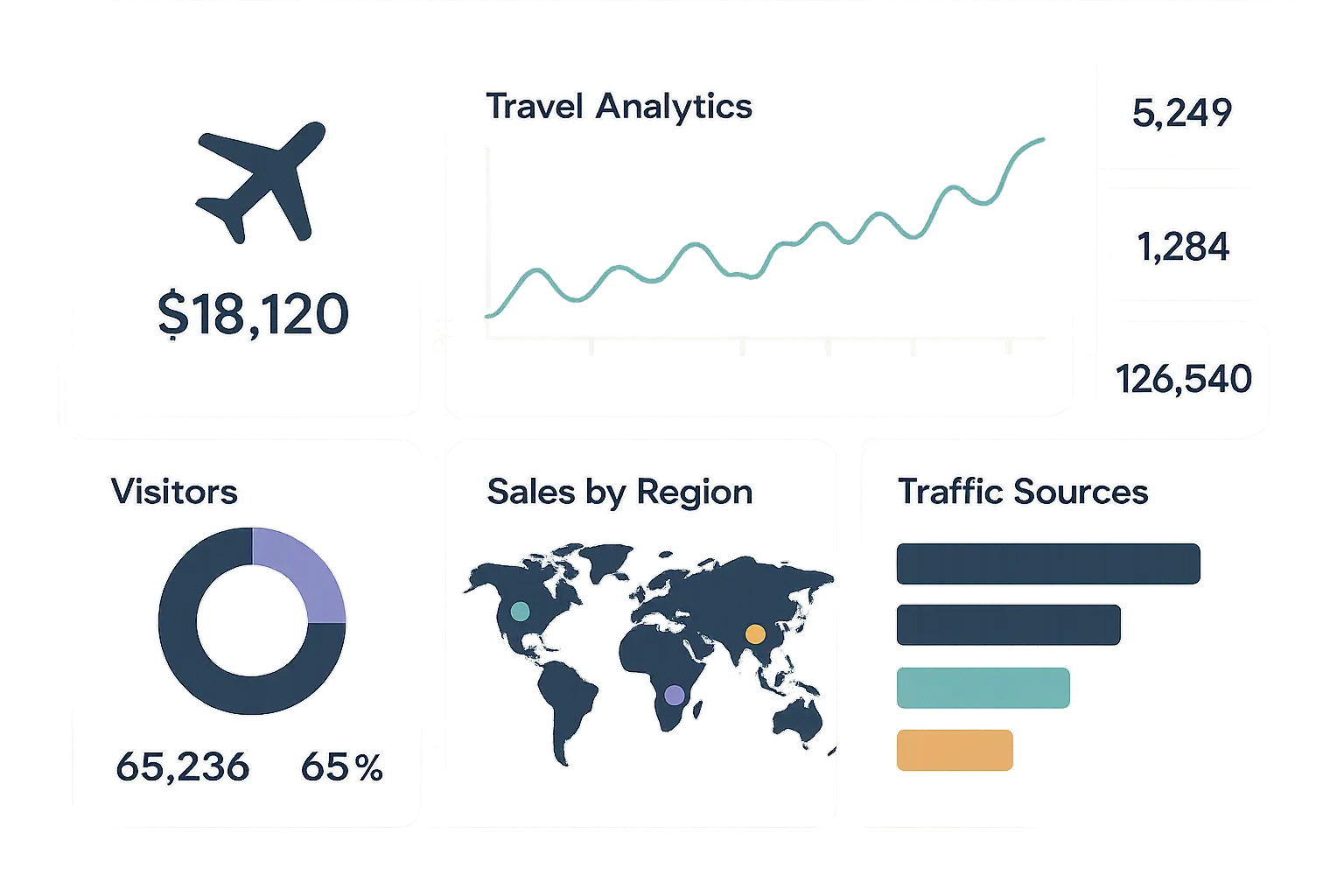
What made Expedia’s transformation remarkable wasn’t the fancy technology they implemented (though that was pretty impressive). It was their willingness to question everything they thought they knew about their customers and start over with data as their guide.
The shift happened gradually, then all at once. Marketing teams that had been relying on “well, last year we did this and it seemed to work” suddenly had access to real-time customer behavior data. They could see which campaigns drove actual bookings versus just website traffic. More importantly, they could predict which customers were most likely to book and when.
Picture this: you’re a marketing manager at 2 AM, watching your campaign budget disappear with zero bookings to show for it. That was the old reality for a lot of teams. The new reality? They could spot problems as they happened and fix them before they became disasters.
Strategic Framework: Building the Foundation for Success
Data-Driven Decision Making: No More Guessing Games
Here’s the thing that blew my mind about Expedia’s approach—they completely threw out the marketing playbook that everyone else was using. You know the one: “Well, last year we spent X on Facebook ads and it seemed to work, so let’s do that again but with 20% more budget.”
Instead, they started asking the hard questions that most companies are too scared to face: Which of our marketing channels actually make us money? Not just clicks or likes or “brand awareness”—actual, honest-to-goodness revenue. And here’s the kicker: the answers weren’t what anyone expected.
It turns out that display ads, which everyone thought were basically useless, were actually crucial for getting people to even consider Expedia in the first place. Meanwhile, some of their “high-performing” search campaigns were just stealing customers who would’ve booked anyway. Wild, right?
Similar to how businesses need to understand their marketing ROI calculations to make informed decisions, Expedia’s framework focused on connecting marketing activities to actual business outcomes rather than vanity metrics.
|
What They Used to Do |
What They Do Now |
|---|---|
|
“Facebook worked last year, let’s double down” |
“Show me the data on which customers actually book and spend money” |
|
Split budgets equally because it feels fair |
Put money where the actual returns are, even if it feels weird |
|
Design ads based on what looks pretty |
Test everything against what customers actually respond to |
|
Measure success by clicks and impressions |
Track real revenue and customer lifetime value |
The framework they built wasn’t rocket science, but it was disciplined. Every single decision had to be backed up with data. No more “I have a feeling this will work” or “Our CEO’s nephew thinks TikTok is the future.” If you couldn’t prove it with numbers, it didn’t happen.
And before you ask—no, this isn’t just about having a bigger budget than your competitors. It’s about being smarter with the money you already have.
Competitive Market Positioning: Standing Out in a Crowded Space
Let’s talk about how brutal the online travel game really is. You’ve got Booking.com breathing down your neck, Priceline undercutting your prices, and every hotel trying to convince customers to book direct. It’s like trying to run a lemonade stand in a neighborhood where every house is already selling lemonade.
Most companies try to solve this by being everything to everyone. Expedia did the opposite. Their data showed them something interesting: different types of travelers care about completely different things. Business travelers don’t give a damn about the pool situation—they want to book fast and change their plans without getting hit with fees. Families? They’ll spend 20 minutes reading reviews about whether the hotel has connecting rooms.
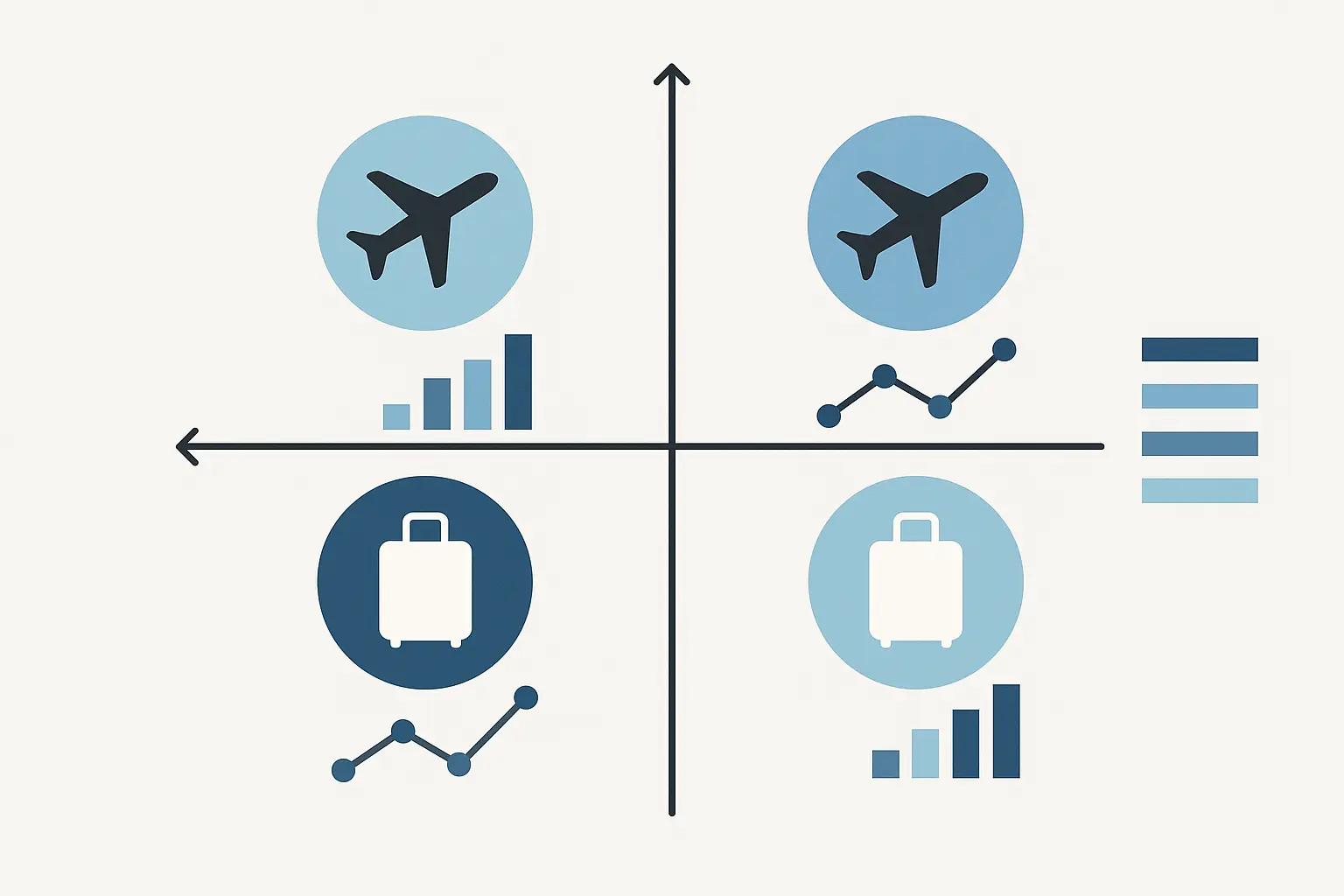
So instead of generic “Book with us, we’re great!” messaging, Expedia started talking to people like actual humans with specific needs. When a business traveler hit their site, they saw flexible cancellation policies front and center. When a family was browsing, they got detailed info about kid-friendly amenities.
The crazy part? This wasn’t just marketing fluff. They actually changed how their product worked based on these insights. Features like price alerts and mobile-first booking flows weren’t random additions—they were strategic moves based on what their most valuable customers actually wanted.
The positioning work extended beyond advertising into product development. Features like price alerts, flexible booking options, and detailed property photos weren’t just nice-to-haves—they were strategic differentiators based on customer behavior data.
Customer Journey Optimization: Mapping Every Touchpoint
Most companies think about the customer journey like this: someone sees an ad, clicks it, maybe buys something. Done. Expedia went full detective mode and mapped out every single thing that happens between “I’m thinking about a vacation” and “I just booked a hotel.”
What they found was fascinating and kind of mind-bending. The customer journey wasn’t a straight line—it was more like a drunk person trying to walk home. People would see a Facebook ad on their phone during lunch, research hotels on their work computer, get distracted for three days, then finally book on their tablet while watching Netflix.
Here’s where it gets really interesting: they discovered that customers who spent more than 3 minutes looking at hotel amenities were 65% more likely to actually book within 24 hours. So what did they do? They redesigned their hotel pages to show amenities right up front, not buried at the bottom after 47 photos of the lobby. This single insight led to a 12% increase in same-day bookings.
Every little touchpoint became an opportunity to nudge people toward booking. Page load speeds (because nobody waits for slow websites), search result ordering (show the good stuff first), even the timing of follow-up emails (turns out 3 days later works better than immediate harassment).
The cross-device tracking was probably the most important breakthrough. Before this, they were basically blind to how customers actually behaved. Now they could see the full story: mobile browsing leads to desktop research leads to tablet booking. Once they understood this pattern, they could optimize each step instead of treating every interaction like it was happening in isolation.
Performance Marketing: Where the Magic Actually Happens
Alright, here’s where we get into the meat and potatoes. All the strategy in the world doesn’t matter if your campaigns suck. Expedia figured out that performance marketing isn’t just about throwing money at Facebook and Google and hoping for the best—it’s about understanding exactly how each channel works and optimizing accordingly.
The big revelation was that different marketing channels have completely different jobs. Search ads are like the closer in a baseball game—they come in when someone’s already decided to buy and just need to pick where. Display ads are more like the starting pitcher—they get people thinking about taking a trip in the first place. Email is like the middle relief—keeping people engaged between initial interest and final booking.
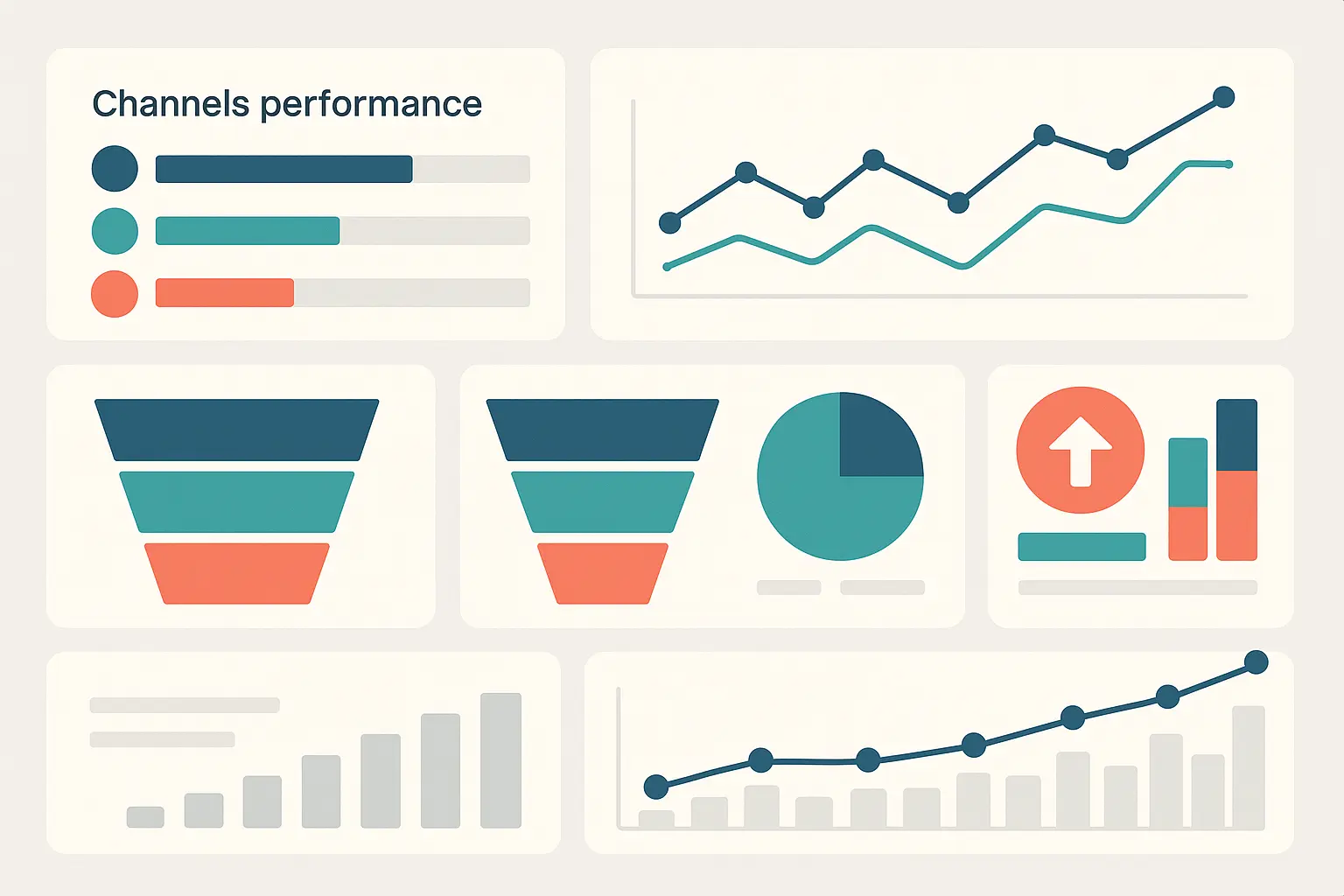
Once they understood these roles, everything changed. Instead of judging every channel by the same metrics, they optimized each one for what it actually did best.
Multi-Channel Attribution: Understanding What Really Works
Here’s where most companies completely screw up their marketing: they give all the credit to whatever channel got the last click before someone bought something. It’s like giving the game-winning touchdown pass all the credit while ignoring the running game that got them down to the 5-yard line.
Expedia’s attribution model was way smarter. They tracked the entire customer journey and gave partial credit to each touchpoint based on its actual role. That Facebook ad that got someone thinking about vacation? It gets some credit. The Google search that helped them research options? Credit. The retargeting ad that finally convinced them to book? Also credit, but not all of it.
The results were eye-opening. Channels that looked terrible under last-click attribution were actually driving tons of value. Display advertising went from “expensive waste of money” to “crucial for starting customer journeys.” Email marketing went from “decent for existing customers” to “essential for nurturing prospects through the decision process.”
This completely changed how they allocated their budget. Instead of cutting spend on channels with poor last-click performance, they optimized each channel for its specific job in the customer journey.
Conversion Rate Optimization: Testing Everything That Matters
While their competitors were obsessing over getting more traffic, Expedia focused on converting more of the traffic they already had. The math is simple: if you can turn 3% of your visitors into customers instead of 2%, you just increased your revenue by 50% without spending another dime on ads.
Just as understanding return on ad spend calculations helps optimize campaign performance, Expedia’s testing program was comprehensive but not random. They didn’t waste time testing button colors or font sizes. They focused on stuff that actually mattered: booking flow simplification, mobile optimization, social proof elements, pricing presentation.
One of their biggest wins came from something stupidly simple. Their original booking process forced people to create an account before completing their purchase. Seems reasonable, right? Wrong. 30% of customers bailed at this step. They tested allowing guest checkouts and boom—15% increase in conversions overnight.
This systematic approach to optimization mirrors what other hospitality companies are achieving. “Marriott’s retargeting campaign boosted bookings by nearly three times while reducing cost per acquisition performance by over 50 percent” using dynamic creative optimization, demonstrating the industry-wide impact of data-driven marketing approaches.
Mobile optimization became absolutely critical as mobile traffic exploded. But here’s the thing: mobile users weren’t just desktop users on smaller screens. They behaved completely differently. Mobile users were more impulsive, more likely to book last-minute trips, but less patient with complicated booking flows. Once Expedia understood this, they built mobile-specific experiences that converted way better.
The social proof experiments were particularly interesting. Adding customer reviews, “X people viewed this hotel in the last hour” notifications, and “Only 2 rooms left!” warnings significantly boosted conversions. But they had to be careful not to go overboard and make the site feel manipulative or desperate.
Revenue Per Visitor: Maximizing Every Interaction
Getting more bookings was great, but Expedia realized they could also make more money from each booking. This wasn’t about aggressive upselling that pisses people off—it was about understanding what customers actually wanted and presenting relevant options at the right time.
Their personalization engine got scary good at predicting preferences. Book a lot of hotels with pools? Pool-equipped properties get highlighted in your search results. Always choose business hotels? You’ll see properties with meeting facilities and business centers first. Travel with kids? Family-friendly amenities get top billing.
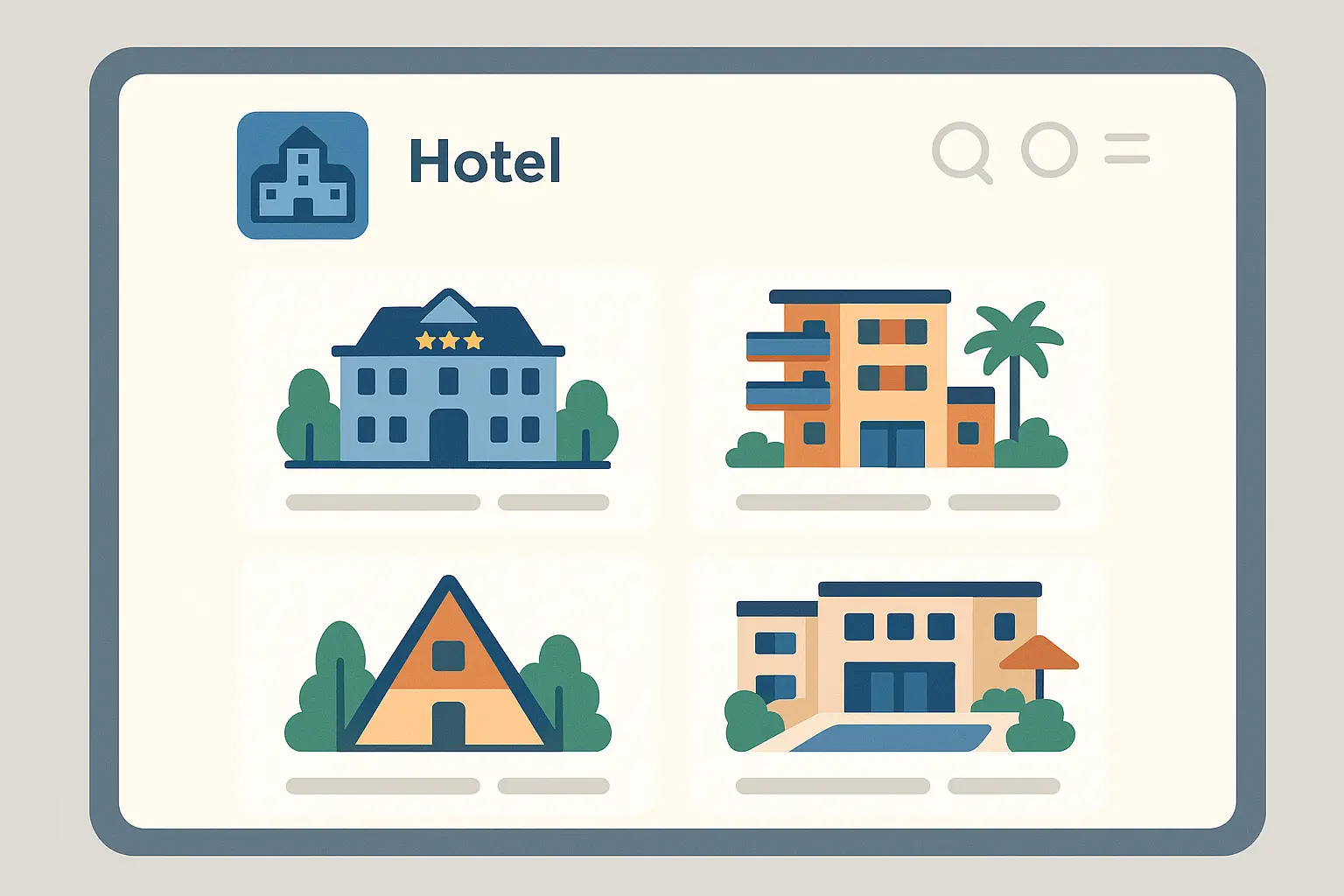
The upselling approach was subtle but effective. Instead of pushing expensive room upgrades during checkout (which increased abandonment rates), they focused on value-added services that genuinely improved the travel experience. Travel insurance for international trips. Airport transfers for hotels near airports. Restaurant reservations for foodie destinations.
Timing was everything. Offering upgrades during the initial booking process felt pushy and hurt conversion rates. But presenting relevant add-ons after the booking was confirmed—but before the trip—had much higher acceptance rates and didn’t cannibalize the original conversion.
The lifetime value focus changed everything about customer acquisition. A budget traveler booking a $50/night hotel might look unprofitable on that single transaction. But if they become a repeat customer booking 4 trips per year, suddenly that acquisition cost makes perfect sense.
Marketing Automation: Scaling Personal Touch
Marketing automation let Expedia deliver personalized experiences to millions of customers without hiring thousands of marketing assistants. But the key was making automated messages feel genuinely helpful rather than creepy or robotic.
Their abandoned cart sequence is a perfect example. When someone starts booking but doesn’t finish, they get:
-
A gentle reminder within 2 hours featuring the exact hotels they looked at
-
A second email after 24 hours with similar properties and customer reviews
-
A final email after 72 hours with a small discount or free cancellation offer
This sequence recovered 18% of abandoned bookings. But the magic was in the details—emails addressed people by name, referenced their specific search criteria, and felt helpful rather than desperate.
The automation extended way beyond abandoned carts. Post-trip emails with destination recommendations based on previous travel patterns. Pre-trip emails with local activity suggestions. Win-back campaigns for customers who hadn’t booked in 6+ months with personalized offers based on their booking history.
The platform integrated with their customer data system to ensure consistent messaging across all touchpoints. Someone who got an email about London hotels would also see London-focused ads on social media and relevant search results on the website.
Technology Infrastructure: The Engine Behind the Results
Behind all these marketing wins was a technology infrastructure that most customers never saw but made everything possible. Expedia’s tech stack had to handle millions of website visitors, thousands of simultaneous bookings, real-time pricing updates from thousands of hotels, and marketing campaigns across dozens of channels—all while providing the data insights that drove optimization decisions.
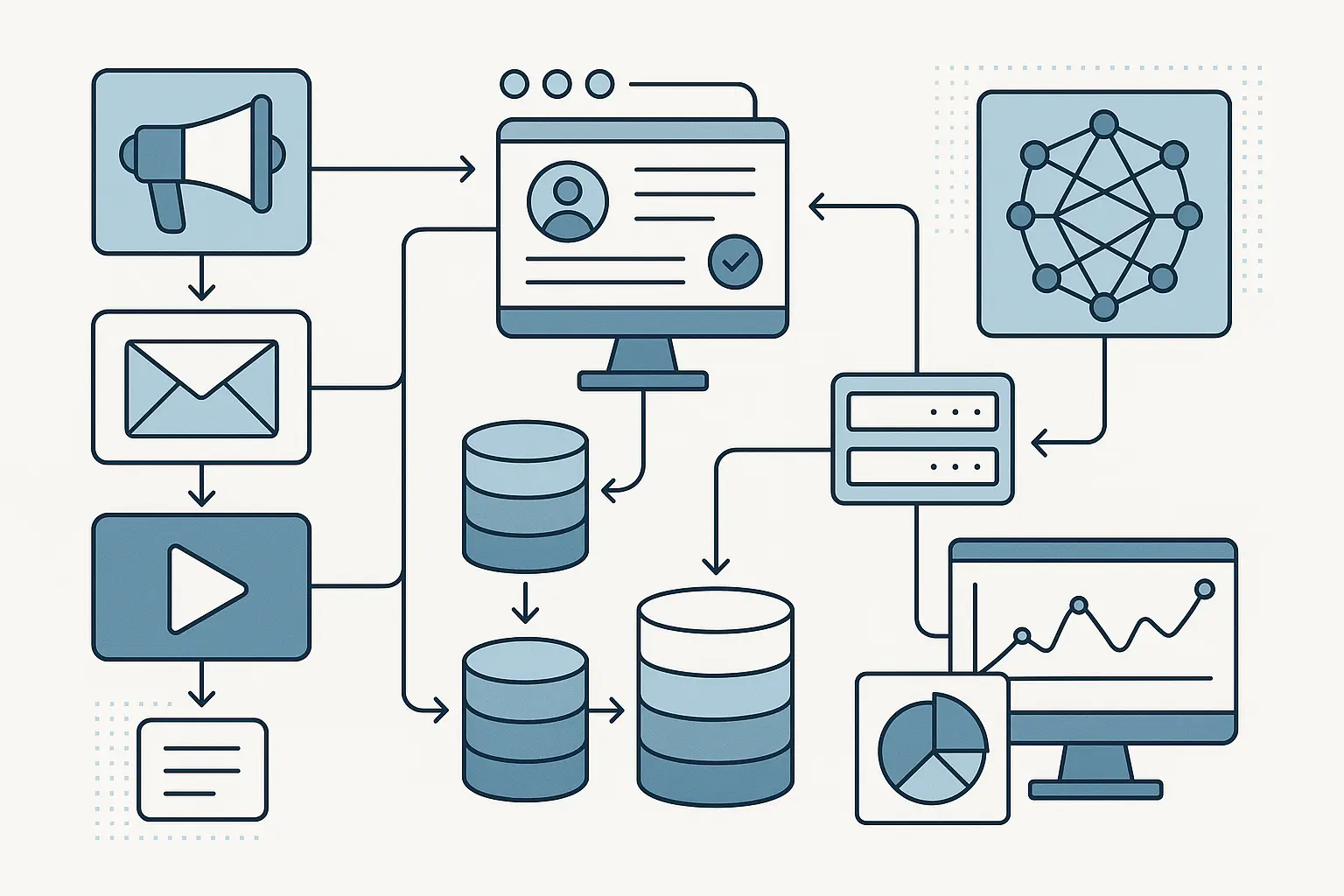
Building this wasn’t just about buying software. It required integrating systems that were never designed to work together, cleaning up years of messy data, and creating workflows that could scale with business growth without breaking.
Let’s be real here—this part wasn’t glamorous. While everyone was excited about the cool personalization features and fancy dashboards, someone had to do the unglamorous work of making sure all the pipes connected properly.
Advanced Analytics: Making Sense of the Data
Real-Time Performance Monitoring: Staying Ahead of Problems
Real-time monitoring changed everything about how Expedia managed campaigns. Instead of finding out on Monday that their weekend campaigns tanked, they could see problems as they happened and fix them immediately.
The dashboard system was designed for real people, not data scientists. Marketing managers got high-level performance across all channels. Campaign specialists could drill down into specific ad groups. Executives got summary metrics and trend analysis. Everyone had access to the information they needed without getting overwhelmed by irrelevant details.
Alert systems prevented small problems from becoming disasters. Campaign cost-per-acquisition suddenly spiking? Alert sent. Website page loading slowly? Team notified before it kills conversions. Competitor launching a major promotion? Pricing team gets a heads up to respond quickly.

The monitoring also tracked external factors that could impact performance. Weather events affecting travel demand. Economic indicators influencing booking patterns. Seasonal trends requiring campaign adjustments. This context helped explain performance changes and informed strategic decisions.
Mobile performance needed special attention because mobile behavior was more volatile and unpredictable than desktop. The system tracked mobile-specific metrics like app crashes, page load speeds on different devices, and mobile conversion funnel performance.
Predictive Analytics: Seeing Around Corners
Predictive analytics let Expedia be proactive instead of reactive. Instead of waiting to see what customers did, they could predict behavior and adjust marketing accordingly.
The models analyzed historical booking data, customer behavior patterns, and external factors to predict future actions. They could identify customers likely to book in the next 30 days, predict which destinations would see increased demand, and forecast seasonal booking patterns.
Customer lifetime value predictions were gold. The models could spot which new customers were likely to become high-value repeat bookers versus one-time purchasers. This let Expedia adjust acquisition spending and focus on customers with the highest long-term potential.
Churn prediction helped with retention. The system identified customers at risk of booking with competitors and triggered targeted retention campaigns. Personalized offers, loyalty benefits, or helpful travel content to maintain engagement.
Demand forecasting improved inventory management and pricing. By predicting which destinations and dates would see high demand, Expedia could negotiate better rates with hotel partners and adjust marketing focus to promote high-margin inventory.
The models continuously learned and improved. As new data became available, algorithms updated predictions and became more accurate over time. This created a competitive advantage that was difficult for competitors to replicate.
Marketing Technology Stack: Making Everything Work Together
Customer Data Platform: Creating a Single Source of Truth
Before the customer data platform, Expedia’s customer information was scattered everywhere. Website analytics in one system, email engagement in another, booking history in a third. Marketing teams couldn’t get a complete picture of their customers, which made personalization basically impossible.
The unified platform changed everything. Every customer interaction got recorded in one place: website visits, email clicks, social media engagement, customer service calls, booking history, even offline interactions. This created comprehensive customer profiles that revealed behavior patterns invisible when data lived in silos.
The importance of AI-powered platforms is becoming increasingly evident across the hospitality industry. “Expedia Group’s Zoom Revenue Accelerator platform streamlined coaching and enhanced sales outcomes, with 84 percent of managers reporting at least one hour saved weekly” according to a recent HSMAI Foundation report, demonstrating how integrated platforms drive operational efficiency.
Privacy compliance was built in from day one. With GDPR and other regulations, Expedia needed systems that could manage customer consent, handle data deletion requests, and maintain compliance across all marketing activities. The platform automated much of this work while still enabling personalized marketing.
The real power came from connecting behavioral data with booking outcomes. The platform could identify that customers who viewed hotel photos for more than 30 seconds were 60% more likely to book. Or that customers who read reviews were willing to pay 15% more for their reservations. These insights drove both marketing strategy and product development.
Data quality became a major focus. The platform included automated cleaning processes that identified and corrected inconsistencies, duplicate records, and incomplete information. Clean data was essential for accurate analytics and effective personalization.
Cross-Platform Campaign Management: Orchestrating Complex Campaigns
Managing campaigns across Google Ads, Facebook, email, display advertising, and other channels used to require separate logins, different interfaces, and manual coordination. Expedia’s integrated system changed that completely.
The platform allowed holistic campaign planning. Teams could see how search campaigns, social media advertising, and email marketing would work together to support a destination promotion or seasonal campaign. Budget allocation happened at the campaign level rather than channel by channel.
Creative asset management became much more efficient. Instead of uploading images and copy to multiple platforms separately, teams could create assets once and deploy them across relevant channels with appropriate formatting handled automatically.
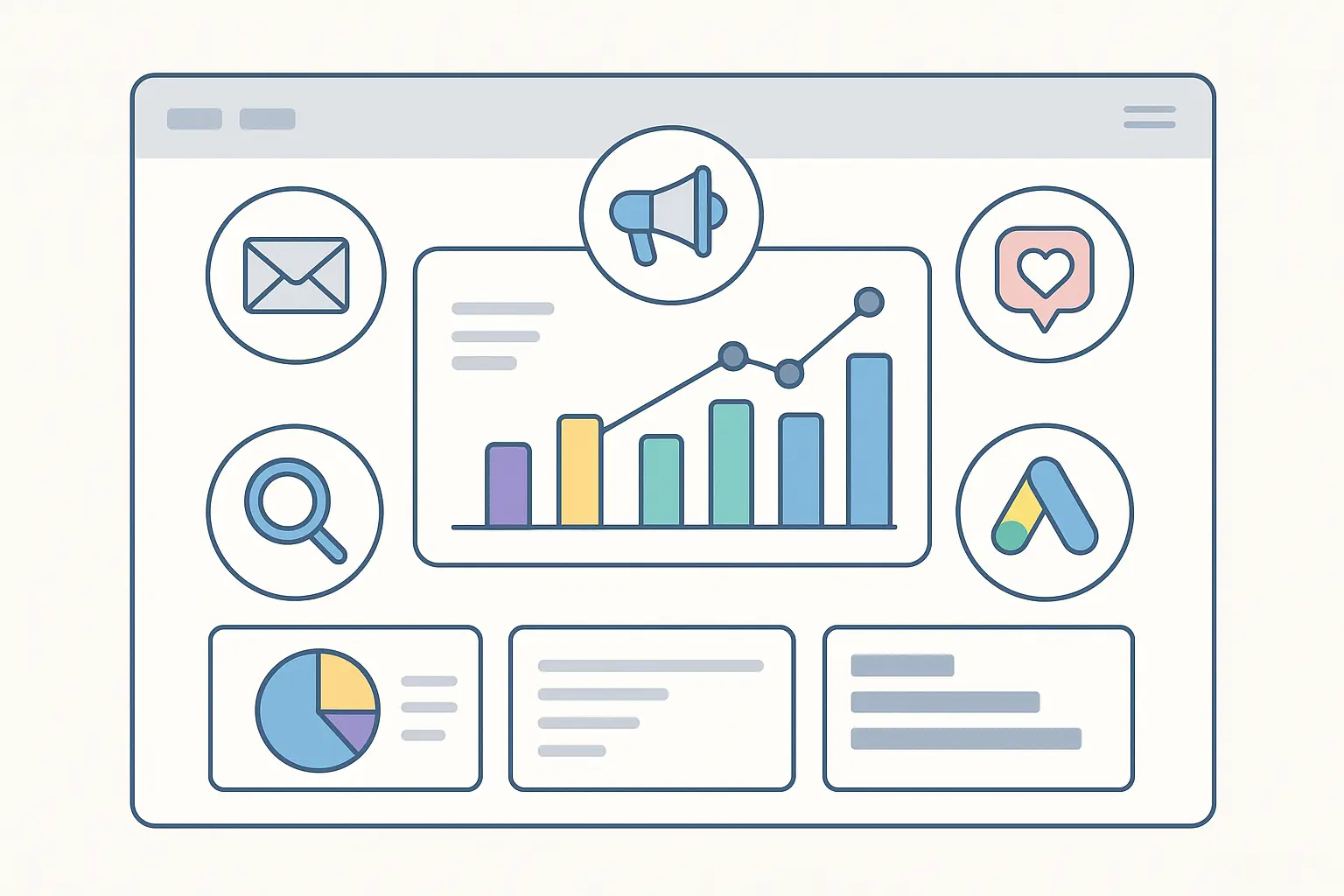
Campaign timing coordination was crucial for major promotions. The system could schedule search ads to increase when email campaigns went live, ensuring customers who clicked email links would see relevant paid search ads if they didn’t convert immediately.
Performance optimization happened across channels rather than within silos. If display advertising was driving awareness that led to search conversions, the system could automatically adjust budgets to support this cross-channel behavior.
Integration enabled sophisticated retargeting strategies. Customers who abandoned bookings could be retargeted with coordinated messages across display ads, social media, and email that reinforced the same promotional offer or addressed common booking concerns.
Performance Measurement Standardization: Comparing Apples to Apples
Different marketing platforms measure success differently, which made comparing channel performance nearly impossible. Google Ads focuses on clicks and conversions. Facebook emphasizes reach and engagement. Email platforms track opens and clicks. Without standardized measurement, budget allocation decisions were basically guesswork.
Expedia created unified KPIs that could be applied across all channels. Cost per booking, customer lifetime value, return on ad spend, and booking conversion rates became standard metrics that every channel reported consistently. This enabled meaningful performance comparisons and data-driven budget allocation.
This standardization became particularly important given the scale of Expedia’s operations, as marketing expenses of leading online travel agencies worldwide reached billions in 2024, making accurate measurement and optimization critical for maintaining competitive advantage.
The standardization extended to attribution windows, conversion definitions, and audience segmentation. A “conversion” meant the same thing whether it came from search, social, or email. Attribution windows were consistent across channels so performance comparisons weren’t skewed by different measurement timeframes.
Reporting automation eliminated manual data compilation. Instead of marketing managers spending hours pulling data from different platforms, automated systems generated standardized reports that could be customized for different audiences and purposes.
The measurement standards included data quality checks. Automated systems flagged unusual performance changes, data discrepancies, and potential tracking issues before they affected decision-making. This prevented bad data from leading to poor strategic choices.
Benchmarking became possible once measurement was standardized. Expedia could compare performance against industry standards, track improvement over time, and identify channels or campaigns underperforming relative to their potential.
Plot Twist: The Human Side Was Harder Than the Tech
Here’s what nobody tells you about digital transformation: the technology is usually the easy part. Getting people to change how they work, make decisions, and measure success? That’s where things get messy.
The shift from intuition-based to data-driven marketing required new skills, different workflows, and a fundamental change in how teams approached their work. Some people embraced the change immediately. Others needed more support and training. A few couldn’t adapt and eventually moved on.

Let’s be real here—this wasn’t some smooth, seamless transformation. There were plenty of moments when teams wanted to go back to the old way of doing things. Some people quit. Some campaigns flopped. But they stuck with it because the alternative was getting eaten alive by competitors.
Team Structure Optimization: Organizing for Success
Skills Development: Building New Capabilities
The skills gap was real and significant. Marketing professionals who’d built careers on creativity and intuition suddenly needed to understand statistical significance, attribution modeling, and data analysis. Some people were excited about learning new skills. Others felt overwhelmed or threatened by the changes.
Expedia’s training program was practical, not academic. Instead of abstract statistics courses, they focused on applied learning. Marketing managers learned how to interpret A/B test results in the context of actual campaigns. Creative teams learned how customer data could inform their messaging without killing their creativity.
Marketing Skills Development Checklist:
-
Basic statistics and A/B testing interpretation
-
Customer data analysis and segmentation
-
Attribution modeling fundamentals
-
Marketing automation platform training
-
Predictive analytics concepts
-
Privacy and compliance requirements
-
Cross-channel campaign coordination
-
Performance measurement and KPI development
The training wasn’t one-size-fits-all. Marketing managers needed to understand analytics well enough to make strategic decisions but didn’t need to become data scientists. Campaign specialists needed deeper technical knowledge to optimize day-to-day performance. Creative teams needed just enough data literacy to inform their work without getting bogged down in spreadsheets.
Hands-on learning worked better than classroom training. Teams learned by working on real campaigns with data science support. They could see immediately how new skills applied to their actual work and how better analysis led to better results.
Career development paths had to evolve too. Traditional marketing career progression didn’t account for analytical skills. Expedia created new roles and advancement opportunities that recognized both marketing expertise and data capabilities. This helped retain talented people who might otherwise have felt left behind.
External training supplemented internal programs. Expedia sent key team members to industry conferences, certification programs, and workshops. They also brought in external trainers and consultants to accelerate skill development in specific areas.
Cross-Functional Collaboration: Breaking Down Silos
Marketing, technology, and data teams had traditionally worked in separate silos with different priorities. Marketing wanted bookings. Technology focused on system stability. Data teams prioritized accuracy and compliance. These different priorities sometimes conflicted, creating friction and inefficiency.
Expedia restructured teams to encourage collaboration. Instead of separate departments that occasionally worked together, they created integrated teams with shared goals and success metrics. Marketing managers, data analysts, and technical specialists worked together daily rather than just during formal project meetings.
|
Collaboration Area |
Before Integration |
After Integration |
|---|---|---|
|
Meeting Frequency |
Monthly formal reviews |
Weekly cross-functional standups |
|
Success Metrics |
Department-specific KPIs |
Shared campaign performance goals |
|
Project Planning |
Sequential handoffs |
Collaborative planning sessions |
|
Problem Resolution |
Escalation through management |
Direct team-to-team communication |
|
Resource Allocation |
Competing budget requests |
Shared resource pools |
|
Knowledge Sharing |
Formal documentation |
Real-time collaboration tools |
Shared success metrics aligned everyone’s incentives. Instead of marketing being measured only on bookings while technology was measured on uptime, teams shared responsibility for overall campaign performance. This encouraged collaboration because everyone succeeded or failed together.
Regular communication became essential. Weekly cross-functional meetings replaced monthly formal reviews. Teams shared challenges, insights, and opportunities in real-time rather than waiting for scheduled updates. This faster communication enabled quicker problem-solving and optimization.
The collaboration extended beyond internal teams. Expedia’s marketing teams worked more closely with external partners, agencies, and vendors. Shared data access and regular performance reviews ensured everyone was working toward the same goals with the same information.
Cultural Transformation: Changing How People Think
Data Literacy: Making Everyone Comfortable with Numbers
Data literacy wasn’t just about teaching people to read spreadsheets. It was about changing how people approached problems and made decisions. Instead of relying on experience and intuition, teams learned to start with data and use analysis to guide their thinking.
The cultural shift took time. People who’d been successful using traditional marketing approaches needed to see that data-driven methods could be even more effective. Early wins were crucial for building confidence and buy-in across the organization.
The impact of this cultural shift became evident in measurable outcomes, as organizations that successfully implement data-driven marketing approaches typically see marketing to revenue ratios of leading online travel agencies optimized significantly compared to traditional approaches, demonstrating the business value of analytical capabilities.
Storytelling with data became an important skill. Raw numbers don’t persuade people—insights and narratives do. Teams learned how to translate data analysis into compelling stories that explained what was happening, why it mattered, and what actions should be taken.
Experimentation became part of the culture. Instead of debating which approach was better, teams learned to test different options and let data determine the winner. This reduced internal politics and arguments while encouraging innovation and creativity.
Failure became a learning opportunity rather than something to avoid. Not every test would be successful, and not every campaign would exceed expectations. But each failure provided data that informed future decisions and improved overall performance.
The data literacy program included basic statistical concepts that marketing professionals needed to understand. Statistical significance, confidence intervals, and correlation versus causation became part of everyday vocabulary. People didn’t need to become statisticians, but they needed to understand these concepts well enough to make informed decisions.
Implementation Timeline: How It All Came Together
The transformation didn’t happen overnight. Expedia’s implementation took place over several years with carefully planned phases that built on each other. Understanding this timeline helps explain how such comprehensive change was possible without disrupting ongoing business operations.
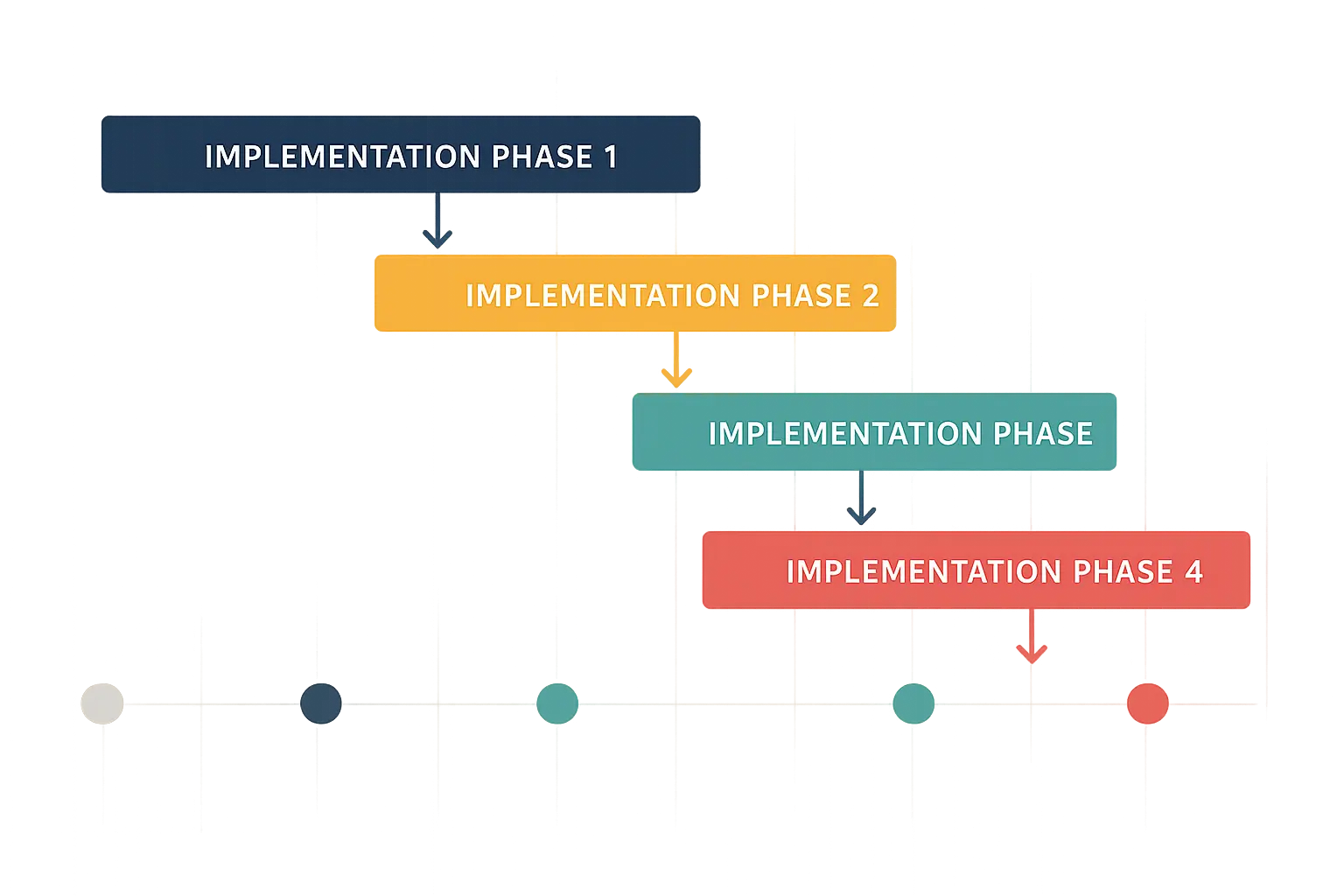
Each phase had specific goals, success metrics, and dependencies. Some elements could be implemented in parallel, while others required sequential execution. The timeline also had to account for seasonal patterns in the travel industry—major system changes couldn’t happen during peak booking periods.
Phase-by-Phase Execution: Building Momentum
Initial Assessment: Understanding the Starting Point
The transformation began with a comprehensive audit of existing marketing operations. Expedia needed to understand their current performance, identify the biggest opportunities, and establish baseline metrics for measuring transformation success.
The assessment covered everything: campaign performance across all channels, customer acquisition costs, conversion rates, customer lifetime value, technology capabilities, team skills, and organizational processes. Nothing was off-limits.
External consultants supplemented internal analysis. Sometimes outside perspective helps identify blind spots and opportunities that internal teams might miss. The consultants brought experience from other industries and companies that had undergone similar transformations.
Competitive analysis revealed how Expedia’s performance compared to industry benchmarks. This helped prioritize which areas needed the most attention and which improvements would provide the biggest competitive advantages.
The assessment also identified quick wins that could be implemented immediately while longer-term initiatives were being planned. These early successes built momentum and demonstrated the value of data-driven approaches to skeptical team members.
Stakeholder interviews were crucial for understanding organizational readiness for change. Different departments and individuals had varying levels of enthusiasm for transformation. Understanding these dynamics helped plan change management strategies and identify potential obstacles.
Technology Infrastructure: Building the Foundation
Technology implementation was the most complex and time-consuming part of the transformation. Expedia had to integrate new systems with existing infrastructure while maintaining business operations and data integrity.
The customer data platform was first priority because everything else depended on having clean, unified customer data. This project took nearly a year and required careful data migration, system integration, and extensive testing before going live.
Analytics platform implementation happened in parallel with data platform development. Teams needed new tools for campaign analysis, performance monitoring, and reporting. Training began before systems were fully deployed so teams would be ready to use new capabilities immediately.
Marketing automation systems came next, building on the foundation of unified customer data and advanced analytics. These systems required extensive configuration and testing to ensure automated campaigns would deliver the right messages to the right customers at the right times.
Integration testing was extensive and ongoing. Each new system had to work seamlessly with existing tools and processes. Performance couldn’t be compromised during the transition period, so extensive testing and gradual rollouts were essential.
Data migration was particularly challenging. Historical customer data, campaign performance data, and booking information had to be transferred to new systems without loss or corruption. This required careful planning, multiple backups, and extensive validation processes.
Team Training: Building Human Capabilities
Team training began before new systems were fully implemented. Expedia wanted people ready to use new capabilities as soon as they became available. The training program was extensive and ongoing rather than a one-time event.
Different roles required different training approaches. Marketing managers needed strategic understanding of new capabilities and how to use insights for decision-making. Campaign specialists needed hands-on training with new tools and optimization techniques. Creative teams needed to understand how data could inform their work without stifling creativity.
New hires brought fresh perspectives and skills that complemented existing team capabilities. Expedia recruited data analysts, marketing technologists, and digital specialists who could help accelerate the transformation and mentor existing team members.
Here’s a real example of how this worked: Expedia’s mentoring program paired senior marketing manager Jennifer with data analyst Marcus. Jennifer taught Marcus about travel customer behavior and seasonal booking patterns, while Marcus helped Jennifer understand statistical significance testing and attribution modeling. This cross-training resulted in a 40% improvement in campaign performance within their first quarter working together.
Mentoring programs paired experienced marketers with data specialists and vice versa. This cross-training helped bridge the gap between traditional marketing expertise and new analytical capabilities. Both sides learned from each other.
External training supplemented internal programs. Industry conferences, certification courses, and workshops helped team members stay current with rapidly evolving best practices and technologies.
The training program evolved based on feedback and changing needs. Initial training focused on basic concepts and tool usage. Advanced training covered optimization techniques, statistical analysis, and strategic planning with data.
Critical Success Factors: What Made the Difference
Executive Leadership: Commitment from the Top
Executive leadership commitment was absolutely crucial. Marketing transformation requires significant investment in technology, training, and organizational change. Without strong support from senior leadership, these initiatives often fail when they encounter obstacles or competing priorities.
Expedia’s executives didn’t just approve the transformation—they actively championed it. They communicated the vision clearly, allocated necessary resources, and held teams accountable for progress. When implementation challenges arose, leadership provided additional support rather than cutting budgets or timelines.
Resource allocation went beyond just money. The transformation required significant time and attention from key team members. Leadership had to balance transformation work with ongoing business operations, sometimes accepting short-term performance impacts for long-term improvements.
Change management required executive involvement. When people resisted new approaches or struggled with new skills, leadership intervention was sometimes necessary to maintain momentum and ensure everyone understood the transformation’s importance.
Success metrics were established at the executive level and cascaded throughout the organization. Everyone understood how their work contributed to transformation goals and how success would be measured. This alignment was essential for coordinated effort across different departments and functions.
Long-term commitment was essential because transformation results weren’t immediate. Some initiatives took months or years to show their full impact. Executive leadership had to maintain support and investment even when short-term results were disappointing or unclear.
Data Quality Breakthroughs: Getting the Foundation Right
Data quality was make-or-break for the entire transformation. All the sophisticated analytics and personalization in the world wouldn’t work if the underlying data was inaccurate, incomplete, or inconsistent.
The breakthrough came when Expedia successfully integrated customer data from all touchpoints into a single, reliable system. This wasn’t just a technical achievement—it required solving complex business process issues, data governance challenges, and organizational coordination problems.
Cross-device tracking was particularly challenging but essential. Customers used multiple devices throughout their booking journey, and understanding these connections was crucial for accurate attribution and personalization. The technical solution required sophisticated identity resolution algorithms and careful privacy compliance.
Real-time data processing enabled immediate optimization and personalization. Instead of waiting for overnight batch processing, marketing systems could respond to customer behavior as it happened. This capability transformed how campaigns could be optimized and how personalized experiences could be delivered.
Data validation processes ensured ongoing quality. Automated systems continuously monitored data integrity, flagged anomalies, and corrected common errors. This prevented data quality from degrading over time as systems evolved and new data sources were added.
The data integration also enabled new insights that weren’t possible when information lived in separate systems. Customer lifetime value calculations became more accurate. Attribution modeling could account for all touchpoints. Personalization could consider complete customer histories rather than just recent interactions.
Strategic Lessons: What You Can Actually Use
The strategic lessons from Expedia’s transformation provide actionable insights that can be adapted for businesses of different sizes and industries. While not every organization has Expedia’s resources or scale, the core principles and methodologies can be scaled appropriately.
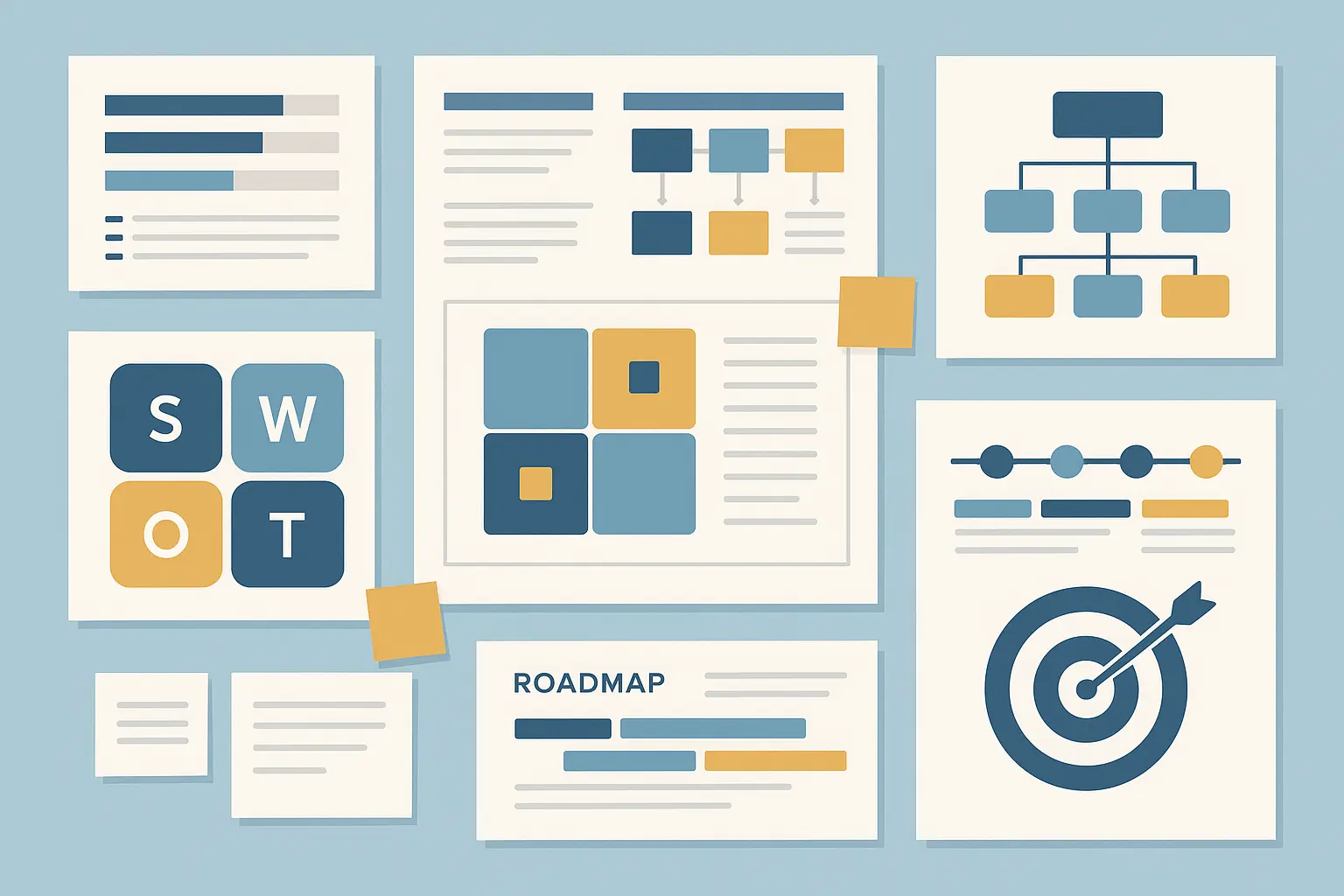
The key insight is that transformation success depends more on systematic execution and organizational commitment than on having the most advanced technology or unlimited budgets. Smaller companies can achieve significant improvements by applying these principles at their appropriate scale.
Scalable Best Practices: Principles That Work Everywhere
Start with Data You Already Have
Most companies have more useful data than they realize. Before investing in new systems or tools, audit what information you’re already collecting and how it could be better utilized. Customer purchase history, website behavior, email engagement, and support interactions all contain valuable insights.
The key is connecting data that currently lives in separate systems. Even basic integration between your email platform, website analytics, and sales data can reveal important patterns about customer behavior and campaign effectiveness.
Focus on actionable insights rather than comprehensive analysis. You don’t need to understand everything about your customers immediately. Start with specific questions that could improve your marketing performance and work backward to identify what data you need to answer them.
Implement Attribution Modeling Gradually
You don’t need sophisticated multi-touch attribution models from day one. Start by moving beyond last-click attribution to understand how different marketing channels work together. Even simple first-click and linear attribution models will provide better insights than giving all credit to the final touchpoint.
Track customer journeys manually for a small sample of customers to understand common patterns. This qualitative analysis can inform your attribution approach and help you identify which touchpoints deserve more credit than they’re currently receiving.
Use attribution insights to optimize budget allocation gradually. Don’t make dramatic changes based on new attribution data. Instead, make small adjustments and monitor the results before implementing larger shifts.
Test Everything, But Start Small
A/B testing doesn’t require sophisticated platforms or statistical expertise to get started. Begin with simple tests on high-impact elements like email subject lines, landing page headlines, or call-to-action buttons. Use free or low-cost tools to establish testing processes before investing in enterprise solutions.
Focus on tests that could significantly impact your key metrics. Testing button colors might be interesting, but testing different value propositions or pricing strategies will have much bigger business impact.
Document your testing process and results. Even failed tests provide valuable insights about what doesn’t work. This knowledge prevents repeating unsuccessful approaches and builds organizational learning over time.
Phased Implementation Roadmap: Building Success Step by Step
Phase 1 should focus on establishing baseline measurements and quick wins. Implement basic analytics tracking, start simple A/B testing, and improve your understanding of current performance. This phase builds momentum and demonstrates value without requiring major investments.
Phase 2 involves improving data integration and expanding testing capabilities. Connect your major marketing systems, implement more sophisticated attribution tracking, and establish regular optimization processes. This phase typically takes 6-12 months and requires more significant resource commitment.
Phase 3 focuses on advanced personalization and automation. Implement marketing automation systems, develop predictive analytics capabilities, and create sophisticated customer segmentation strategies. This phase builds on the foundation established in earlier phases.
Each phase should have clear success metrics and exit criteria. Don’t move to the next phase until you’ve achieved the goals of the current phase. This ensures you’re building capabilities systematically rather than jumping ahead to advanced techniques before mastering the basics.
Allow flexibility in your roadmap. As you learn more about your customers and marketing performance, you may discover opportunities or challenges that require adjusting your implementation plan. The roadmap should guide your efforts without becoming a rigid constraint.
Success Metrics and Benchmarking: Measuring What Matters
Establish baseline metrics before implementing changes. You need to know your starting point to measure improvement accurately. Track key metrics like customer acquisition cost, conversion rates, customer lifetime value, and return on marketing investment for at least three months before making major changes.
Focus on business impact metrics rather than vanity metrics. Website traffic and social media followers might look impressive, but they don’t necessarily correlate with business results. Prioritize metrics that directly connect to revenue and profitability.
Understanding proper measurement is crucial for success, which is why tools like our marketing budget calculator help businesses allocate resources effectively based on performance data rather than guesswork.
Create benchmarks for different customer segments, marketing channels, and time periods. Seasonal businesses need to compare performance year-over-year rather than month-over-month. B2B companies should benchmark differently than B2C companies. Industry benchmarks provide context, but internal benchmarks are often more actionable.
Track leading indicators alongside lagging indicators. Revenue and customer acquisition are important lagging indicators, but they don’t help you optimize performance in real-time. Leading indicators like email open rates, website engagement, and campaign click-through rates can signal problems or opportunities before they impact final results.
Regular reporting and review processes ensure that metrics drive action rather than just measurement. Monthly performance reviews should identify trends, opportunities, and areas needing attention. Quarterly strategic reviews should assess whether your metrics are still aligned with business goals.
Risk Mitigation Strategies: Avoiding Common Pitfalls
Data privacy compliance should be built into your transformation from the beginning rather than added later. Understand relevant regulations like GDPR, CCPA, and industry-specific requirements. Implement consent management, data retention policies, and customer rights processes before they become urgent compliance issues.
Avoid over-relying on any single marketing channel or data source. Diversification reduces risk and provides more complete customer insights. If one channel becomes less effective or more expensive, you’ll have alternatives ready to scale up.
Plan for technology integration challenges. New marketing tools rarely work perfectly with existing systems immediately. Budget extra time and resources for integration work, data migration, and troubleshooting. Have backup plans for critical functions in case new systems don’t work as expected.
Manage organizational change carefully. Technical transformation often fails because of people issues rather than technology problems. Invest in training, communication, and change management. Address resistance early and provide support for team members struggling with new approaches.
Start with pilot programs rather than company-wide implementations. Test new approaches with small customer segments or limited campaigns before rolling them out broadly. This allows you to identify and fix problems before they impact your entire marketing operation.
Maintain focus on customer experience throughout your transformation. Data-driven marketing should improve customer experiences, not make them feel manipulated or overwhelmed. Regularly assess how your optimization efforts affect customer satisfaction and brand perception.
The Reality Check: What Actually Moved the Needle
The proof of any marketing transformation is in the results. Expedia’s systematic approach to data-driven marketing delivered significant improvements across multiple business metrics. These results weren’t just statistical improvements—they translated into real business value and competitive advantages.
Understanding these specific outcomes helps other organizations set realistic expectations for their own transformation efforts and provides benchmarks for measuring success.
Revenue Impact: Bottom-Line Results
Booking Conversion Improvements: More Customers, Same Traffic
Expedia’s systematic conversion rate optimization delivered a 23% increase in booking conversion rates across desktop and mobile platforms within 18 months of implementation. This improvement meant the same amount of website traffic generated significantly more bookings without increasing marketing spend.
Mobile conversion rates saw even more dramatic improvements, increasing by 35% as Expedia optimized their mobile booking experience based on user behavior data. Mobile users had different needs and behaviors than desktop users, and addressing these differences specifically drove substantial performance gains.
The conversion improvements weren’t uniform across all customer segments. Business travelers showed 28% conversion rate increases, while leisure travelers improved by 19%. This insight led to segment-specific optimization strategies that further enhanced performance.
A/B testing contributed significantly to these improvements. Over 200 individual tests were conducted on various elements of the booking process, from search result displays to checkout flow optimization. While not every test was successful, the cumulative impact of winning tests drove substantial overall improvement.
Customer Acquisition Cost Reduction: More Efficient Spending
Refined targeting and attribution modeling led to a 31% reduction in customer acquisition costs across all marketing channels. Better understanding of which marketing efforts actually drove bookings allowed Expedia to eliminate wasteful spending and focus resources on high-performing activities.
Paid search optimization contributed significantly to cost reductions. By identifying which keywords and ad groups delivered the highest-value customers, Expedia could bid more aggressively on profitable terms while reducing spend on keywords that generated clicks but not bookings.
Social media advertising became much more cost-effective through improved targeting and creative optimization. Customer acquisition costs through social channels decreased by 42% while maintaining booking volume, demonstrating the power of data-driven optimization.
Email marketing efficiency improved dramatically as personalization and automation reduced the need for broad, generic campaigns. Targeted email campaigns had 60% lower acquisition costs than mass email blasts while generating higher engagement and conversion rates.
Market Share Growth: Competitive Advantages
Brand Recognition Enhancement: Standing Out from Competitors
Brand awareness metrics showed significant improvement following Expedia’s marketing transformation. Unaided brand recall increased by 18% among target customer segments, while brand consideration improved by 22%. These improvements were particularly strong among younger travelers and mobile-first customers.
The personalization efforts contributed to brand perception improvements. Customers who received personalized marketing communications rated Expedia 15% higher on brand satisfaction surveys compared to customers who received generic messaging.
Social media engagement rates increased by 45% as content became more targeted and relevant to specific customer segments. Higher engagement translated into increased brand visibility and word-of-mouth recommendations.
Customer service ratings improved as marketing efforts attracted better-qualified customers who had clearer expectations about their bookings. This created a positive feedback loop where satisfied customers became brand advocates who drove additional bookings through referrals.
Customer Retention Optimization: Building Loyalty
Repeat booking rates increased by 29% as Expedia’s retention marketing became more sophisticated and personalized. Customers who booked multiple trips generated significantly higher lifetime value, making retention improvements particularly valuable.
The customer data platform enabled much more effective retention campaigns. By understanding individual customer preferences and booking patterns, Expedia could send relevant offers and recommendations that encouraged repeat bookings.
Loyalty program engagement improved dramatically through personalized communications and targeted offers. Active loyalty program members had 40% higher retention rates and 25% higher average booking values compared to non-members.
Email marketing played a crucial role in retention improvements. Post-trip follow-up campaigns that included personalized destination recommendations and exclusive offers generated 35% higher response rates than generic promotional emails.
Geographic Expansion Success: Data-Driven Growth
Expedia’s data-driven approach enabled successful expansion into new international markets with optimized localization strategies. Market entry costs were 25% lower than historical averages because data insights helped identify the most effective marketing channels and messaging for each new market.
Localization efforts went beyond translation to include cultural preferences and booking behaviors specific to each market. This approach led to 40% higher conversion rates in new markets compared to previous expansion efforts that used standardized approaches.
Competitive analysis in new markets was enhanced by data-driven insights about customer preferences and behavior patterns. This intelligence helped Expedia position themselves effectively against local competitors and identify underserved customer segments.
Partnership strategies in new markets were informed by data about customer acquisition costs and lifetime values. This enabled more strategic partnership negotiations and better resource allocation for market development efforts.
Final Thoughts
Look, here’s the bottom line: Expedia’s transformation wasn’t some magical overnight success story. It was years of methodical, disciplined execution of proven principles. The results—23% better conversion rates, 31% lower acquisition costs, 29% higher retention—didn’t happen because they had some secret sauce or unlimited budget. They happened because Expedia stopped making decisions based on gut feelings and started listening to what their customers were actually doing.
What makes this whole case study worth your time is that it proves transformation success isn’t about having the fanciest technology or the biggest budget. It’s about being systematic, staying focused on what actually moves the needle, and having the patience to build capabilities over time rather than expecting instant miracles.
The timeline matters here. This took several years of sustained effort, not a few months of intense activity. If you’re thinking about doing something similar, set realistic expectations. Quick wins are possible and important for building momentum, but lasting transformation requires patience and persistence.
Most importantly, Expedia never forgot who they were trying to serve throughout this whole process. Every optimization, every test, every new system was evaluated based on whether it made the customer experience better while driving business results. That customer-first approach prevented the transformation from becoming a purely internal efficiency exercise that ignored what actually mattered to their customers.
Similar to how we approach advanced analytics for strategic growth, Expedia’s success came from systematically applying data science principles to marketing challenges rather than relying on intuition or traditional approaches.
If you’re sitting there thinking your marketing feels more like gambling than strategic investment, you’re not alone. Tons of businesses are throwing money at marketing activities without really understanding what’s driving results. But here’s the thing—you don’t need Expedia’s scale or resources to start making smarter decisions. You just need to stop guessing and start measuring what actually matters to your customers.
The principles are scalable. Start with the data you already have. Test small changes on high-impact elements. Focus on business metrics that actually connect to revenue. Build capabilities systematically rather than trying to do everything at once. Most importantly, stay focused on improving the customer experience while driving business results.
Whether you need help with Google Ads optimization or comprehensive analytics implementation, our approach mirrors the systematic methodologies that drive real business results.
Our highly tuned scientific approach to market analysis helps identify the gaps that other agencies miss. Whether you need PPC campaign optimization, email marketing strategy development, or comprehensive inbound marketing programs, we apply proven frameworks that turn marketing spend into predictable, measurable ROI. Ready to stop gambling on marketing and start building strategies rooted in data and science? We can help your business achieve similar transformation results.



